With the current rise in classic car prices we look at what fun classics are still out there for less than the price of a new hot hatch.
Classic car prices have been rising fast lately, and it’s not just at the top end of the market. Even cars that might have been considered more affordable, such as the Triumph TR4 and Jaguar MK II 3.8, have appreciated to the point where decent examples are out of reach of the average enthusiast, so where does this leave the enthusiast looking for a fun classic to use? The answer is they are actually in good shape, as there are still plenty of interesting older cars that can be had for reasonable money. With this in mind, I thought it was time to surf the classified to see what is out there and come up with a list of ten interesting, fun and affordable classics.
To some extent, my thoughts were inspired by my recent trip to the Journées d’Automne. The event featured the complete gamut of classic cars at both ends of the pricing spectrum, so I decided to consider affordable cars that would be ideal for a theoretical weekend road trip, which would include some motorway work to get to and from the event, some light track work and some back road driving. I’m not sure of the exact age criteria for the Journées d’Automne, but cars introduced prior to 1980 seems to be about right, so I've stuck with that.
The most important aspect is obviously the budget, and I’ve set a ceiling of £20,000 (or the same amount converted into US dollars or Euros in some cases) as the maximum spend for a viable running car, even if it’s not a potential concours winner. £20,000 is not exactly cheap but it's roughly what a mid-sized family car will set you back, and it's less than modern hero cars such as the Toyota GT86 and Renaultsport Megane 265. Some of the cars on the list push that boundary to the very limit; some get nowhere near it, even for the best examples.
Finally, in the interests of variety I have excluded any cars we have included in previous lists or other articles on Drive Cult, so that means no Jaguars or Mercedes Benzes among others.
I have obviously looked at this from a British standpoint, but perhaps more by luck than judgment, all but one of the cars on the list were officially offered for sale in the US, and some are more readily available and cheaper in the States than in Europe.
This list is not a “best of”, since some of these cars aren't exactly comparable with others. It was actually quite hard to keep this to ten cars, so I’ve included a couple of alternative choices to each car that would also fit the bill. In each case, the prime car would be my first choice though. At the end I pick a personal favourite, and do let us know if you agree with me or not!
The list is presented in alphabetical order.
1. Alfa Romeo 105 series

Any list of affordable classics is bound to feature an Alfa Romeo, and no car defines the brand more than the 105 Giulia family. The 105 came in several forms: the boxy but aerodynamically efficient saloons, the Bertone-bodied coupés and Pininfarina Spiders. All are powered by versions of Alfa Romeo’s twin-cam four-cylinder engine, with capacities ranging from 1300 to 2000cc.
Prices of all 105s have risen over the last few years, in part due the car's popularity for historic racing and track days. Today the £20,000 budget probably rules out an early step nose coupé or a round tail Duetto Spyder. However, it should still get you into a decent saloon or series 2 Kamm-tailed Spider and even a perfectly presentable but not perfect later Coupé. Regrettably the rare Zagato-bodied Juniors are considerably more money.
Whichever version you choose, these are fun cars to drive, and there are a wealth of tuning options that can make one of these into a seriously fast car. Many are a feature in historic racing, as shown in this video from Petrolicious below:
Also consider: Fiat 124, BMW 2002
2. Alpine-Renault A310
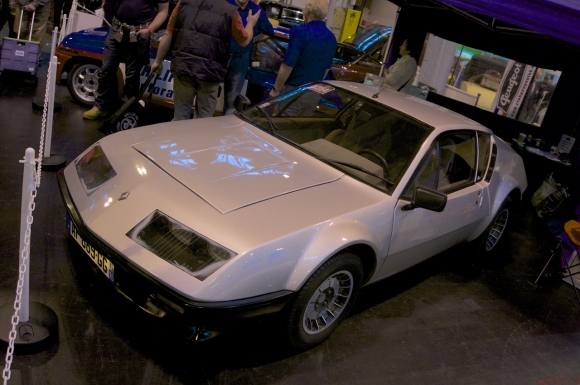
Classic air-cooled Porsche 911s are rising fast to the point that even the usual entry-level version, the 3.0SC, is north of £20,000 for a nice example. However there is one other rear-engined sports car that can be had within budget, and for UK buyers it's rather more exotic, too: the Alpine-Renault A310.
The A310 was launched in 1971. It featured a steel backbone chassis clothed in a fibreglass body and was initially powered by a 1600cc engine from the Renault 17 producing around 125bhp. These early cars are distinguished by the funky looking six headlamp front.
In 1976, the A310 was updated with a more conventional four-headlamp front, which was needed to accommodate the larger radiator for the new 2.7 litre PRV V6 engine, which pushed power up to 150bhp, along with considerably more torque.
Looking at A310s today, the biggest challenge for UK buyers is finding one. The car was never officially offered in the UK and all are LHD, which means there are very few in the UK classifieds and the ones that are, are beyond the £20,000 budget. However, if you have a phrasebook on hand a surf of French website leboncoin.fr and German site Mobile.de each reveal plenty of A310s available within budget, in both four and six-cylinder versions.
Personally, I prefer the look of the four-cylinder version, but whichever you choose, chances are you will stand out at any car event.
Also consider: Lotus Europa, Lotus Esprit S1 and S2, Matra Bagheera.
3. Citroën DS
Never mind an affordable classic list, the DS probably sits fairly high on many people’s lists of greatest cars of all time. Launched in 1955, the car was so far ahead of its time it was still considered to be a competitive product when it went out of production twenty years later. The car set new standards in ride and handling due to its hydropneumatic self-levelling suspension. Its slippery shape — the work of Flamino Bertoni and André Lefèbvre — looked like nothing else in the Fifties or even the Sixties.
It even made its mark in motorsport with two wins in the Monte Carlo rally (albeit the second was after the controversial disqualification of the Mini Coopers).
Today, it's quite easy to find a standard DS (or the more basic ID versions) for under £20,000, although the very best cars and all the Chapron coachbuilt versions are more than this. I'd probably go for a late DS23 Pallas fitted with the 141bhp 2.3-litre electronic fuel injected engine as this addresses the DS’s main criticism — a lack of power. Reasonable DS23s can be found for close to £20,000.
Of all the cars here, it's probably the one least likely to be taken out on track as part of the planned weekend trip, but would definitely be the most enjoyable on the motorway sections.
Also consider: Rover P5B coupé (the first four door coupé), Triumph 2500 PI
4. Datsun 240Z

The Datsun 240Z needs little introduction. The smart coupé from the land of the rising sun is often credited as being the car that destroyed the British sports car industry. I’m not sure if that's entirely true, but it is true that the vast majority were sold to the United States, and UK examples are few and far between. That’s something of a shame since the UK version featured a five-speed gearbox while the US cars made do with a four-speed. If you can find a decent UK car, it is likely to be over £20,000 in the current market. However, there are plenty of LHD cars imported from the US that fall within our budget.
The 240Z has always been a popular car for aftermarket modification, with many cars having had the 2.4-litre straight-six swapped for a Chevrolet small block or even the mighty RB26DETT engine from the Nissan Skyline. However, I reckon to make the 240Z the ideal tuned classic car, a more traditional triple Weber carburettor conversion on the L24 inline-six would be perfect.
Also consider: Toyota Celica (A20), Ford Capri 3000 Mk 1.
5. Fiat X1/9
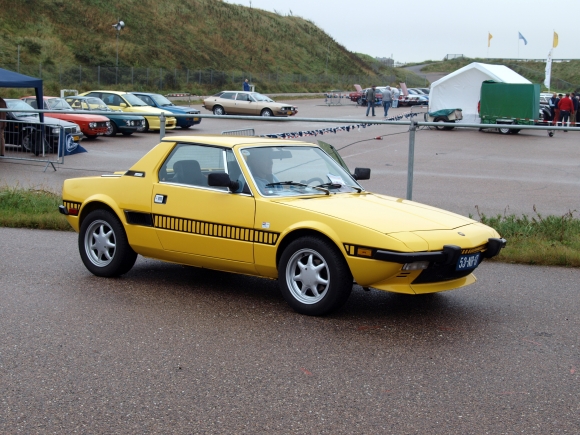
Even the ropiest pre-1980 Italian exotics from Ferrari, Lamborghini and Maserati are north of £20,000, and any below that should probably be avoided like the plague. Still, if you fancy something mid-engined and Italian with a body designed by the same man responsible for the Lamborghini Countach and Ferrari 308GT4, there's the Fiat X1/9.
Launched in 1972, the little mid-engined wedge featured a 1300cc SOHC engine producing a measly 75bhp, though despite this horsepower defecit the little Fiat was praised for its excellent handling.
RHD cars didn't appear until 1976, and in 1978 the engine was enlarged to 1.5 litres and the gearbox was upgraded to a five-speed. Unfortunately, all markets also gained rather ungainly US-specification bumpers. Production continued all the way through to 1989 with later cars sold as Bertones rather than Fiats.
Not surprisingly, most cars available today come from the later production years, especially if you want a RHD example. Rust has accounted for many earlier examples. Prices are low, though, and even the best examples won’t trouble five figures.
Aside from rust, the biggest issue with the X1/9 in today’s driving is lack of power, though this can be addressed by swapping the engine with something from the rest of the Fiat/Lancia range. The Fiat Uno Turbo, Lancia Delta HF Turbo and Fiat 124 can all provide a suitable donor engine.
Also consider: Lancia Montecarlo (Scorpion in US market), Triumph TR7 (for the wedge styling)
6. Lancia Fulvia
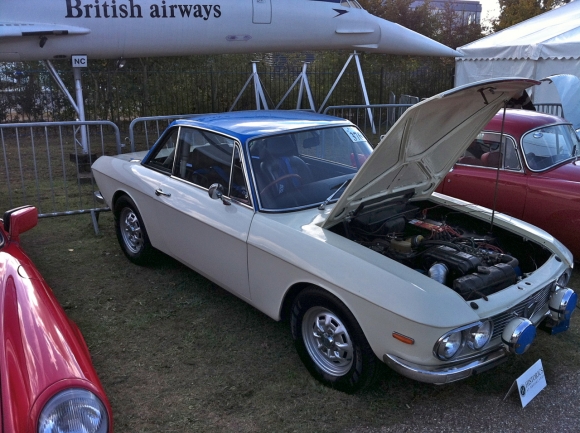
The Lancia brand has become synonymous with rallying, but the car that really started it on its path to dominating this form of motorsport was the Fulvia.
As with the Alfa 105, the Fulvia is a range of cars, a saloon and two different coupés: one with elegant in-house styling and the Fulvia Sport styled by Zagato at the top of the range. Power came from Lancia’s own narrow angle V4 engine in 1.2, 1.3 and later 1.6-litre capacities. What really marks the Fulvia out, and distinguishes it from the 105, is that the Fulvia is front-wheel-drive.
Normally front-wheel-drive would be a turn-off for enthusiasts, but the Fulvia has always been praised for its excellent handling, and the drivetrain almost certainly was an advantage on slippery rally stages.
Here we're really interested in the two coupés, and both body styles are available for under £20,000. Of the two, the Zagato-bodied Sport version is the one I'd choose. I love the styling, which while perhaps less elegant than the in-house coupé, has real presence and aerodynamic efficiency. Jay Leno seems to be a fan, too, going by the video below:
Also consider: Saab 99 (another front-wheel-drive coupé with rally pedigree), Saab Sonnet III. Innocenti Coupé C.
7. MGB GT
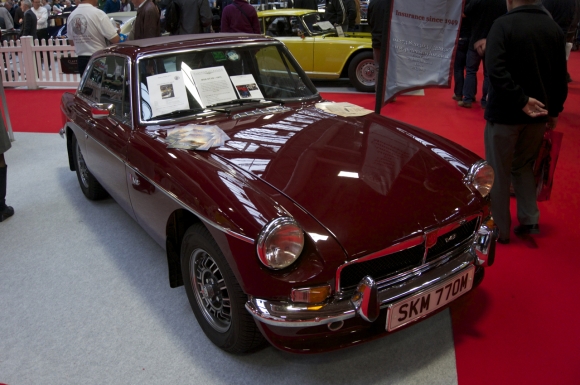
Okay, so the MGB is probably the most obvious choice for an affordable classic car, but there is a good reason for that. In the UK is it is easily the best-supported classic car, and it's almost possible to build a brand new MGB from the spare parts that are available. As standard, the B is considered a bit of an insipid drive, especially in later rubber bumper form with its raised ride height. However, there's also a huge range of aftermarket tuning and suspension parts that can turn any MGB into a serious road-burner.
Personally, I prefer the hardtop GT version. The conversion to coupé was done by Italian style gurus Pininfarina, and the ultimate GT is the V8 version, powered by the ubiquitous Rover 3.5 litre V8. As standard BL used a very mild spec of the V8, but this can easily be tuned.
Almost any version of the MGB can be had for under £20,000, and while it may not be the cool choice, it might be the sensible one.
Also Consider: Triumph GT6, Alfa Romeo Alfetta GTV
8. Plymouth Barracuda Formula S 1967 -1969

I wanted this list to include a Pony or Muscle car from the States, but which one? Well, obviously the Ford Mustang and Chevrolet Camaro have to be considered, but reading period road tests from Car and Driver, it would seem that these icons weren’t that highly regarded back in the day. Instead, I’ve picked their rival for the Chrysler corporation, the '67-'69 Plymouth Barracuda, which, when specified with the Formula S package, offered an interesting mix of US V8 grunt and European-like handling prowess.
The Barracuda came in notchback, fastback and convertible forms, and the Formula S package could be specified on any of the available V8 engine options. To be within budget, you're probably looking at one of the smaller of these V8s, but with plenty of tuning options available, you won’t be wanting for power, and the smaller engine will no doubt help the handling. Back in the day, the MOPAR cars were not considered to be that well built, but I doubt any car today will be totally original!
Personally, I would look for a fastback version as the notch looks a little ungainly. Whichever you choose, you can revel in having something a little different from the usual choices from Ford and Chevrolet.
To see the potential in a Barracuda Formula S, check out this video from Petrolicious:
Also consider: AMC Javelin, Australian Chrysler Valiant Charger, and yes the Ford Mustang and Chevrolet Camaro.
9. Porsche 914

We’ve already discussed that classic Porsche 911s are beyond our budget, but there is another classic car from Stuttgart’s finest that’s in budget: the Porsche 914.
The 914 was the result of a collaborative project between Porsche and Volkswagen which was intended to produce a replacement for the Porsche 912 and the Volkswagen Karmann Ghia. In the end, a disagreement between the two companies left the car being sold as a Porsche, or weirdly, a VW-Porsche in some markets. Engine-wise there was the choice of VW flat-fours in the 914 and the 2.0-litre version of the Porsche flat-six in the 914-6. All versions feature the same mid-engine targa top body-style. The car was never offered officially in the UK and as a result was never made in RHD.
The 914-6 is sadly a long way from being within the £20,000 budget, but no matter. The 914 benefits from one of the most widely used and easily tuned engines ever made. It should be perfectly possible to upgrade the VW flat-four to match the output of the 914-6, and if you're more adventurous with your upgrades, it's possible to swap in Subaru flat-fours and far more powerful versions of the Porsche flat-six from the 911.
The styling of the 914 has always been controversial, and it doesn’t really fit in with anything else Porsche has made. Personally, I like it, and it makes rather more sense if you think of it as a seventies version of the Porsche 356 Speedster, a car which also used a modified VW flat-four.
Also consider: Porsche 924 (especially a Turbo if you can find one), Volkswagen Karmann Ghia.
10. Triumph TR6
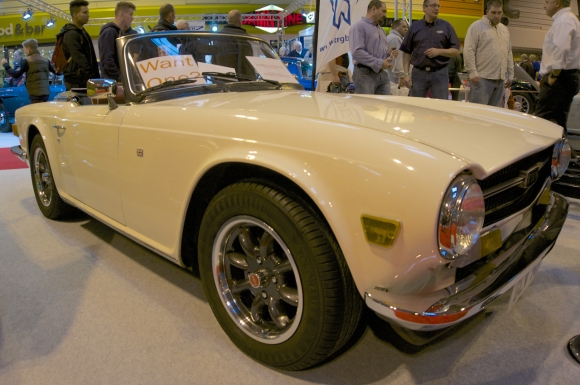
The formula for the typical British sports car usually goes something like this: open two-seat design, powered by a four or preferably six-cylinder engine. The trouble is, many classics that follow this template, such as the Jaguar E Type and Austin Healey 3000, now fall well above the £20,000. However, there is one car that offers much of the same charm but falls within our budget: the Triumph TR6.
Launched in 1969, the TR6 was a heavy update of the earlier TR5, which is also outside our budget. The Italian Michelotti styling of the earlier car was replaced by a more squared-off design by German company Karmann. Power comes from Triumph’s 2.5-litre inline-six, and UK versions used Lucas fuel injection and produced a reputed 150bhp (later reduced to 125bhp), while US models used carburettors and made do with a mere 104bhp.
TR6s are available within budget, but prices are creeping up, so it's best not to delay if you want a slice of traditional open-topped six-cylinder British sports car.
Also Consider: TVR 3000S; Jensen Healey
Which would I choose?
I’m a fan of all the cars here (and most of the ones that didn’t make it to the top ten), but within the constraints of the budget I've set, three really stand out to me as cars I want to own: the Alfa, Citroën and Lancia. Of the others, I really want a 914, but it's the Porsche powered 914-6 that really floats my boat. The Plymouth would get more serious consideration if I lived in the States, where the long straight roads and cheap fuel would enable the best use of the big engine.
The Alpine is interesting, but I suspect my tall stature might find it difficult to get comfortable, and the lack of visibility from the cockpit and LHD only might be a pain in the UK. I would love to have a 240Z, but the one I really want is a UK car with a five-speed gearbox and sadly I couldn’t find any of those in budget during the search. The Fiat probably lacks power for me in standard form but would be the good basis for a project car.
The MG and the Triumph are both cars that tick all the boxes, but the thought of owning either doesn’t excite me as much as the final three.
To pick the final choice, I have used the second parameter of the weekend away to decide. Here the Citroën falls down for the more enthusiastic driving part, but as a classic to use on a regular basis to cruise London or take a longer touring trip, it's right up there.
The final two, the Alfa and the Lancia, have been compared many times in magazines and online. I suspect the RWD Alfa might be ultimately the more fun car to drive, but the Lancia, in Zagato form at least, is rarer and more exotic. The clincher for me is that I have at least four friends who already own and love Alfa 105s, so in an attempt to be a little different, I'm going to choose the Lancia Fulvia Zagato as my favourite affordable classic for less than £20,000.
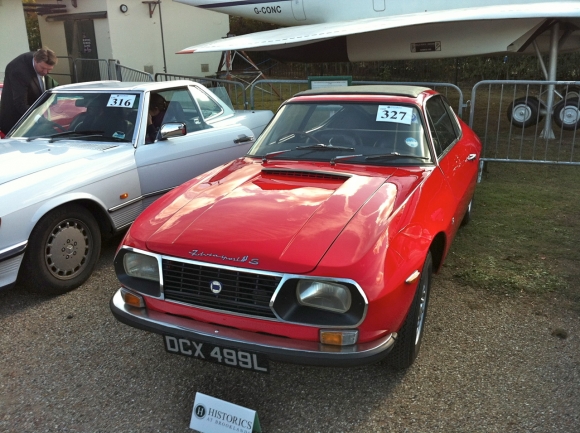
All prices obtained by review of classified ads on carandclassic, classiccarsforsale, Hemmings, Leboncoin.fr and Mobile.de and other sites during October and November 2014.
Photo and video credits:
Citroën DS video by Supercarclassics
Alfa and Plymouth videos by Petrolicious
Lancia Fulvia Zagato video by Jay Leno's Garage
Fiat X1/9 photo by Alfanbeen via Wikimedia Commons
All other pictures by the author.

